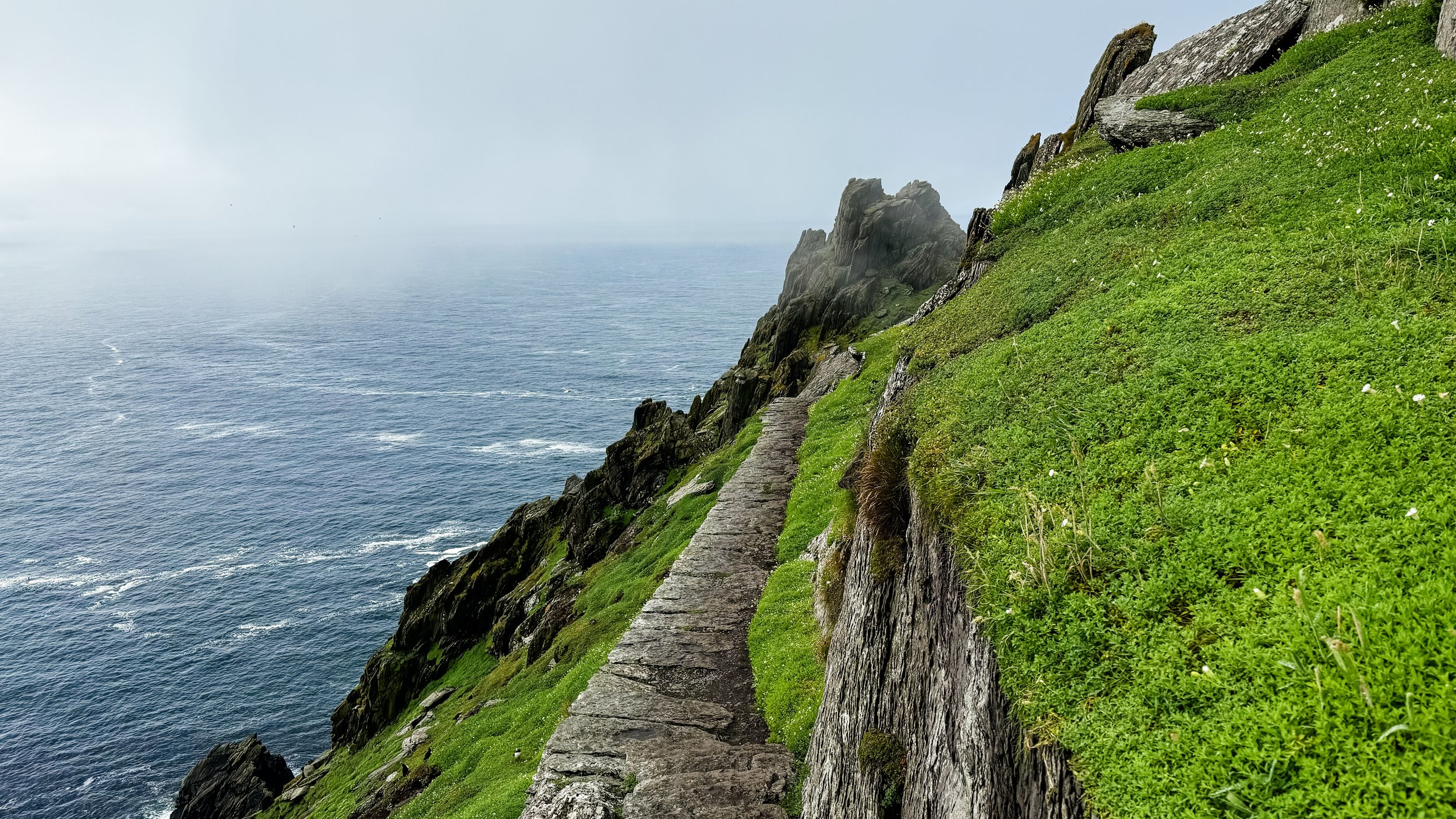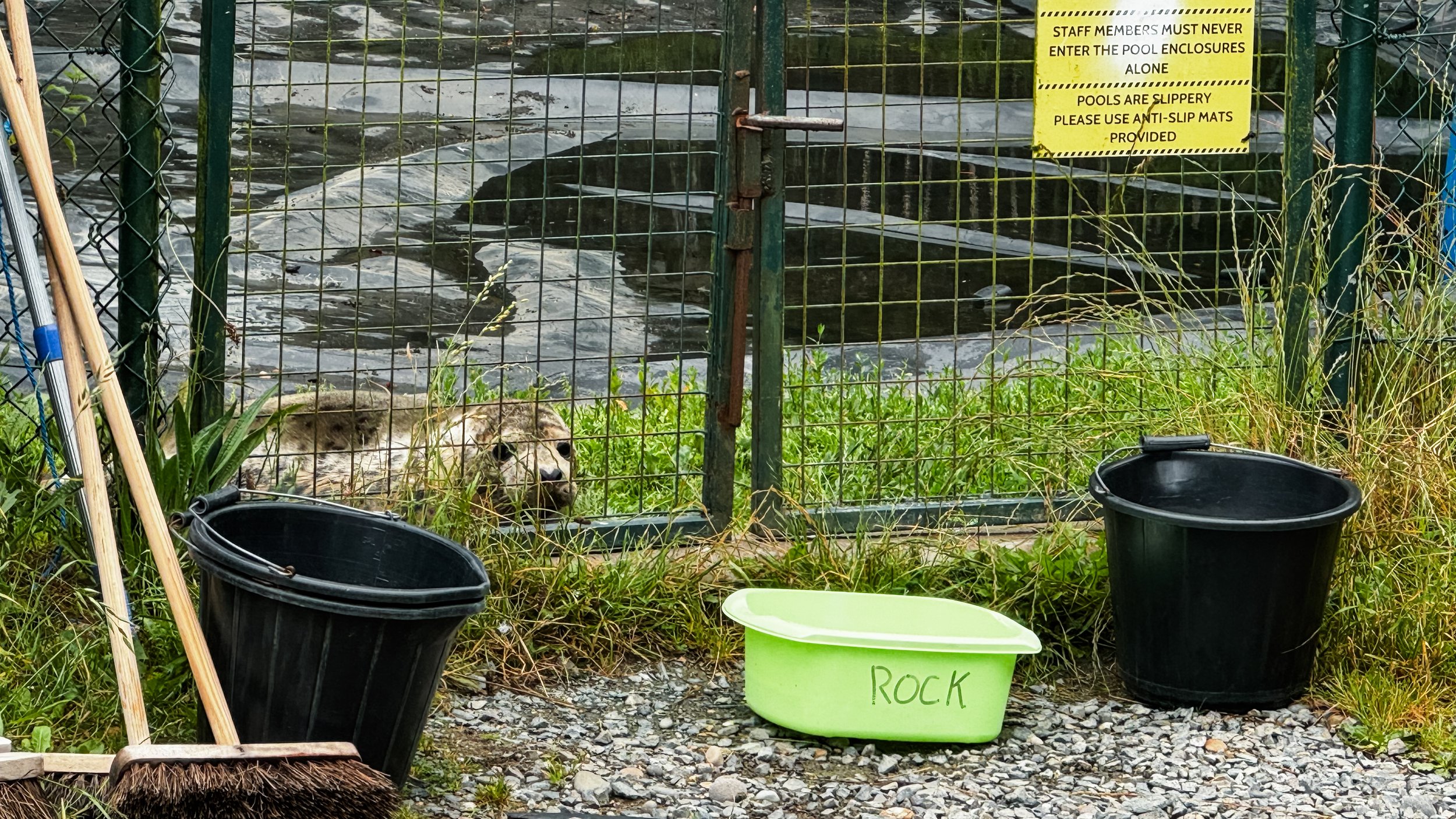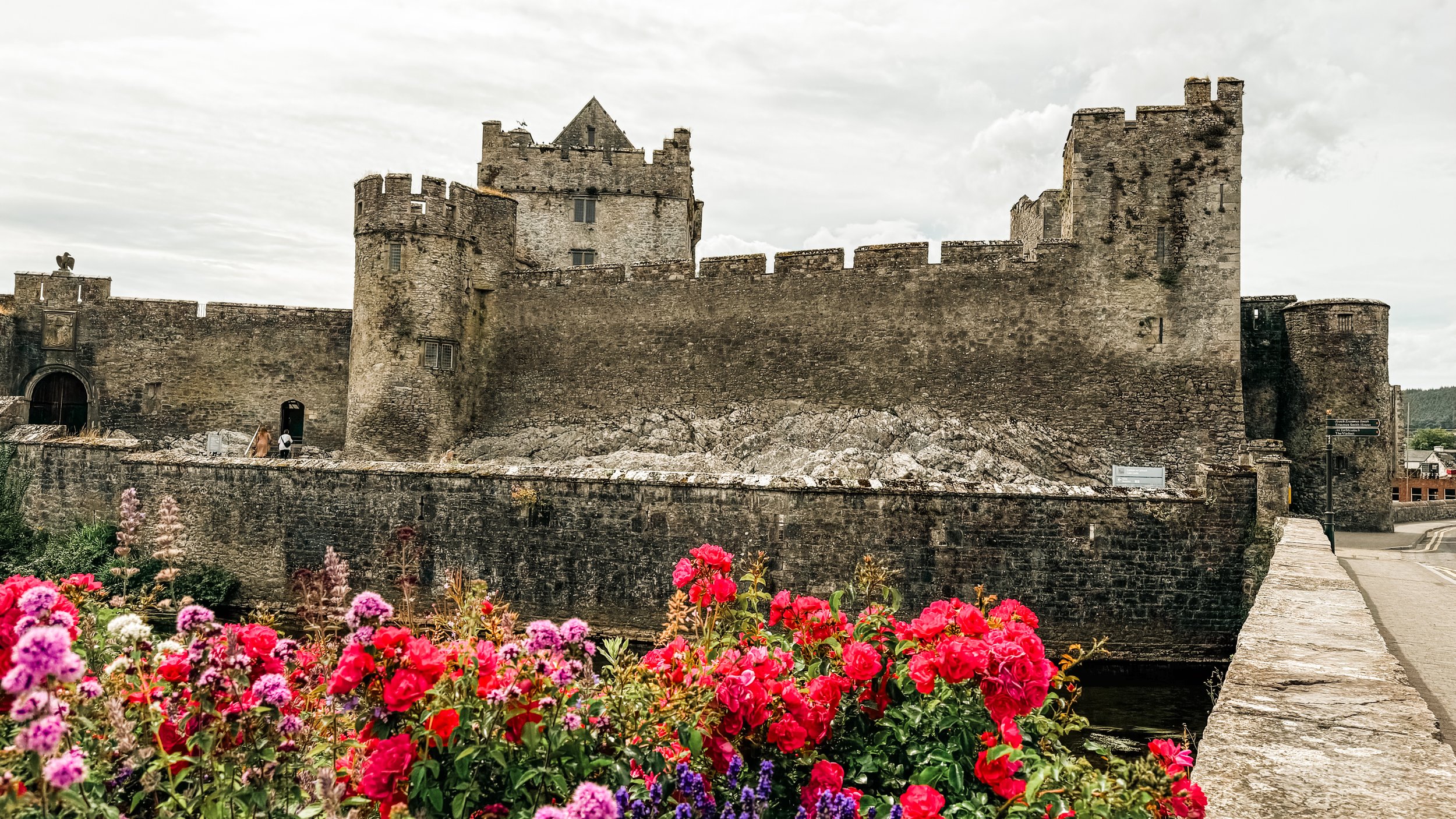The Giant’s Causeway is a remarkable geological location that is steeped in mythology and legends. Located on County Antrim’s coast in Northern Ireland, the iconic hexagonal basalt columns that stretch out into the ocean were believed to have been created by the Irish giant Finn MacCool to face his Scottish rival, the giant Benandonner. In a more geological sense, the basalt columns were created by ancient lava flows. Similar basalt columns can be found across the ocean on the coast of Scotland.
While the coastline and pathways down to the causeway are free and accessible to everyone, we opted to pay to use the visitor centre. It is admittedly a little on the expensive side, but this guarantees a parking spot in the dedicated carpark, access to the very informative displays in visitor centre and use of the audio guides, which the girls really loved! They received the kids version which had lots of stories and facts from the legend of the giants.
We walked down the blue track from the visitor centre, which takes the lower path along the shoreline. We fully intended to take the red path on the way back that requires you to climb up the hillside and follow the path at the top of the cliffs, but we spent so much time at the causeway, we decided to return back up the quicker blue track.
There is a shuttle bus that ferries people along the road of the blue path, it’s 1 pound per person and is ideal for anyone with mobility issues but we found the walk to be really easy and enjoyable for the kids.
Even though I’ve known about the Giant’s Causeway since I was a kid, I kept my expectations low, fearing it would be over hyped. But I was very wrong. It was very busy with other tourists, but it really is a magical location. It’s amazing to be able to walk across all the basalt columns and enjoy the coastline stretching out on either side. It’s so much fun to simply explore the location and take in the scenery. There were many other points of interest that we didn’t make it too, including the Giants Boots and Organ Pipe, you could really spend all day exploring the area if you are willing to do a lot of walking. We visited in the afternoon, after stopping at the Dark Hedges and Dunluce Castle, and spent about 2.5 hours there, in hindsight we should have allocated a lot more time.





























































































































































































